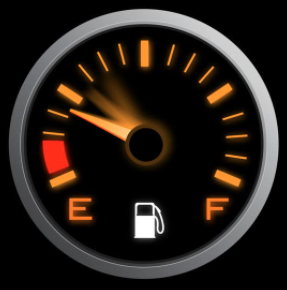Businesses are legally required to implement fleet vehicle insurance across their fleet, but insuring each individual vehicle is both costly and time consuming. Luckly, most fleet car insurance companies offer discounted rates for insuring entire fleets under the same package.
However, comparing the costs of insurance packages is only the first step in finding the right fleet vehicle insurance for your business. Other key things to keep in mind include the quality of service and the amount and type of coverage that’s provided.
Remember: you’ll be working with this insurance provider for an extended period of time, so you want to make sure they’re a good fit for your company in every way.
This article will break down the different types of fleet vehicle insurance, how to apply for fleet insurance and what to prepare for your application, and how to save money when it comes to insurance costs.
Get a Free Fleet Vehicle Insurance Checklist:
The Main Types Of Fleet Vehicle Insurance
There are three primary types of fleet vehicle insurance: third-party, third-party fire and theft, and fully comprehensive. Here’s an overview of each type of insurance and the benefits of each.

1. Third-Party Insurance
Third-party insurance is the most basic type of fleet insurance and therefore the cheapest. This type of insurance only covers third party damage done to another driver and / or their vehicle. This kind of insurance policy will not cover damage done to your own vehicles or drivers, meaning you’d have to pay for it out of pocket.
2. Third-Party, Fire & Theft
With this type of fleet vehicle insurance, you’d have the same coverage as third-party insurance as well as coverage for stolen vehicles or vehicles seriously damaged by fire. This is neither the cheapest nor the most expensive insurance option, but it does provide you with extra coverage.
3. Fully Comprehensive
Fully comprehensive fleet vehicle insurance is the most expensive option, but it’s also the most comprehensive. With this type of insurance, you’ll be covered for third-party damage, theft, fire and damage to your own vehicles and drivers.
Read more: Employee Company Car Agreement | Contract Template And Tips
Choosing A Fleet Vehicle Insurance Provider
Choosing between insurance providers involves more than comparing upfront costs. There are another of other important factors to consider when choosing a fleet insurance provider, including:
- What types of insurance are provided? (i.e. liability, passenger accident, full or partial comprehensive coverage, etc.)
- What types of damage are covered?
- How high are the copayments for damage? Does the copayment amount depend on the type of damage?
- What’s the maximum coverage?
- What’s the premium for the insurance package?
- Does the insurance cover both the vehicles and the drivers?

How To Apply For Fleet Car Insurance
Different insurance companies have different rules that will determine whether your fleet qualifies for their policies. However, a good rule of thumb is that a fleet with two or more vehicles should qualify for a fleet insurance package.
Applying for fleet vehicle insurance is a complicated process, so it’s best to use an insurance broker to save you time and make sure you get the best deal.
Before applying for a specific insurance plan, be sure to have the following information on hand for the insurance company:
- How many vehicles are in your fleet?
- What type(s) of vehicle is in your fleet?
- What type of trade does your business do?
- Have any of the vehicles sustained damage already? What’s the estimated cost of the existing damage?
- How old is each vehicle ?
- How often are the vehicles used?
- Where are the vehicles kept overnight?
This information will help the insurance company gauge the risk of covering your fleet and create an appropriate quote.
Read more: What Is Fleet Insurance?
7 Fleet Car Insurance Money Saving Tips
1. Compare different fleet car insurance quotes
While it might be compelling to choose the fleet insurance provider that everyone knows, such an approach might not get your business the best price or even fit your business needs. Instead of selecting the most recognisable insurance company, always compare different fleet insurance quotes from other reputable insurance companies to ensure you are not overpaying.
2. Employ drivers with high experience and clean records
Ideally try to employ drivers over 25 with a clean record. Fleet car insurance premiums are lower for those kinds of drivers. Insurance companies reason that drivers under the age of 25 are more prone to reckless and distracted behaviour while on the road, and most do not have sufficient experience behind the wheel. While it might not be possible to only employ drivers over 25 years of age, limiting the weekly mileage of those younger drivers and allowing them to drive under a good condition, like during the day, might help reduce possible accidents. Such practices could thus reduce your fleet car insurance premiums in the long haul.

3. Additional driving lessons
Most insurance companies offer discounts for drivers who regularly refresh their driving skills and road safety knowledge. Not to mention the practical benefits of continual road safety training. See if your insurance company offers lower premiums for companies that regualrly retrain their drivers.
4. Regular maintenance of fleet vehicles
Regular maintenance is crucial for every vehicle as it ensures the entire fleet’s effectiveness. But more importantly, regularly maintained vehicles are less likely to encounter an accident. Less accidents means lower fleet insurance costs.
5. Provide proper fleet security
Equipping your fleet with security such as tracking devices and alarms can lower your fleet car insurance costs. Many insurance providers will lower the premiums for vehicles equipped with a car tracker. Car tracking features such as Geofencing and GPS tracking help lower the effectiveness of potentional theives, keeping your vehicles safe at all times.
6. Install telematics devices
Telematics devices are great resources for monitoring car activity and allow insurance companies to reward careful drivers with discounts. A car tracking or fleet management device can assess each driver to see how responsibly they drive. Providing such data to your fleet insurance prodiver can lower the your car insurance charges.
7. Bundle your fleet coverages
Bundling your coverage is a simple way to save money. Try to avoid insuring your fleet vehicles individually. Many fleet insurance providers offer discounts when you insure multiple vehicles at a time.
Read more: A Beginner’s Guide To Multi Van Insurance

Save With Vimcar’s Fleet Tracking
Fleet owners are legally required to insure their fleet vehicles, but finding the right insurance plan requires more than just comparing prices. The number, type and age of your vehicles can affect your insurance premium, as can the type of insurance you select.
If you’re looking to safely cut costs on your insurance premium, investing in a fleet telematics system may be the answer. Many insurance companies give discounts to fleets with telematics systems. With a business vehicle tracking system like Fleet Geo, fleet owners can see the real-time location of their vehicles, be alerted to potential theft attempts and more. Valuable data like this may induce your insurance provider to lower your monthly premium.





